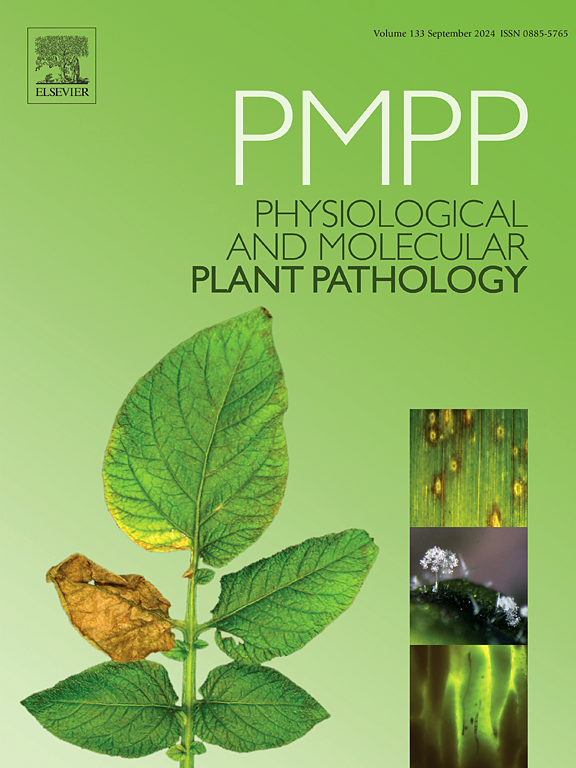Unleashing oxymatrine from Streptomyces rochei (GA) as a potent nematicidal agent against root-knot nematode, Meloidogyne enterolobii
IF 2.8
3区 农林科学
Q2 PLANT SCIENCES
引用次数: 0
Abstract
Sustainable agriculture faces significant challenges from root-knot nematodes (Meloidogyne spp.) particularly, the invasive species Meloidogyne enterolobii, which severely impacts guava. This study explores a sustainable biocontrol solution using Streptomyces rochei (GA) and its bioactive metabolites. Using GC-MS analysis, oxymatrine was identified from S. rochei GA and demonstrated the highest binding affinity (−6.7 kcal/mol) to the nematode target protein, Me col-1 through in-silico analysis. The stability of this interaction was further validated through molecular dynamics simulations, which confirmed the robust and consistent binding of oxymatrine to the target protein. Furthermore, the results of in vitro assays further validated that oxymatrine @ 200 ppm had nematicidal properties and showed 100 % effectiveness in reducing nematode mortality and egg viability. Also, by incorporating in-silico and in-vitro bio efficacy assays, the key findings underscored the role of oxymatrine from S. rochei (GA) as a potent and sustainable tool for managing M. enterolobii infestations by promoting eco-friendly agricultural practices and long-term soil health.

求助全文
约1分钟内获得全文
求助全文
来源期刊
CiteScore
4.30
自引率
7.40%
发文量
130
审稿时长
38 days
期刊介绍:
Physiological and Molecular Plant Pathology provides an International forum for original research papers, reviews, and commentaries on all aspects of the molecular biology, biochemistry, physiology, histology and cytology, genetics and evolution of plant-microbe interactions.
Papers on all kinds of infective pathogen, including viruses, prokaryotes, fungi, and nematodes, as well as mutualistic organisms such as Rhizobium and mycorrhyzal fungi, are acceptable as long as they have a bearing on the interaction between pathogen and plant.

 求助内容:
求助内容: 应助结果提醒方式:
应助结果提醒方式:


